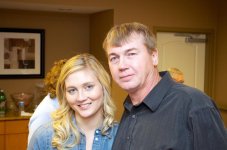Well, the big advantage of digital is that we can see what we are doing immediately, and we have a second chance while we are there. And advantage of DSLR is that it has controls like Flash Compensation to tweak that second try. The camera computer is too dumb to always get it right, which is why they always send a human photographer along too.

No, eight feet does not need 45 degrees. Too much risk of direct forward spill when you do that. Near (almost) straight up is about right, except for extreme distances.
8 feet is not why it was underexposed (assuming similar ISO and aperture, etc, so that the flash had capability to do it). It is what is in front of the camera that affects it. Scenes vary. You can use +EV Flash Compensation to fix it, then and there. Go back and look at it now, and it likely has lots of white or light colors in it (walls, etc). Reflected light meters like in the camera (which are dumb too) only know to just try to make everything come out in the middle.
Reflected Meters: If the scene is mostly white, it will be underexposed everytime so it comes out middle gray. If the scene is mostly black (or dark colors), it will overexposed everytime so it comes out middle gray. Everything comes out averaging middle gray. That is simply all reflected light meters can do. See
How light meters work And photographers learn to deal with it.

